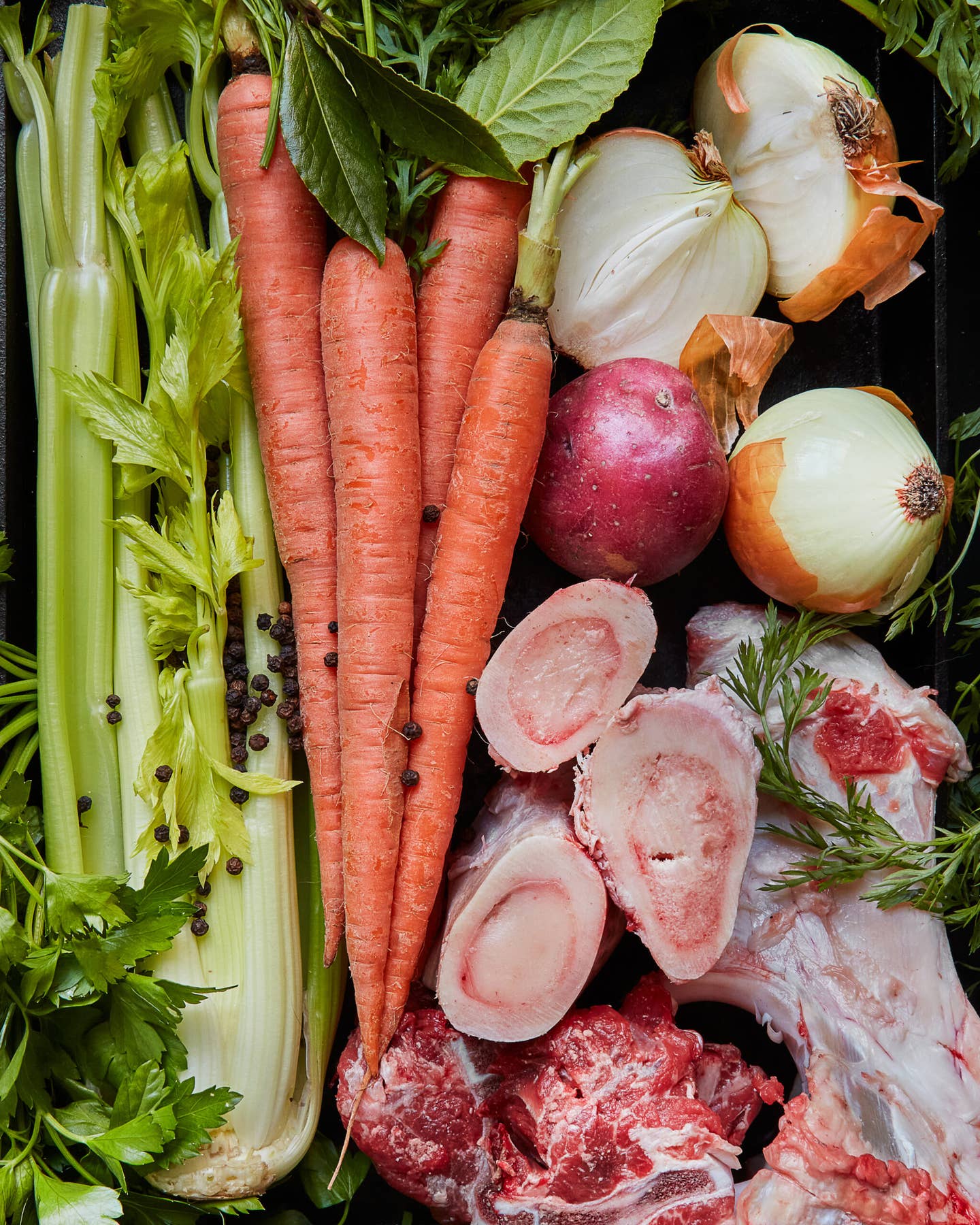How to Make Beef Stock
Meaty, sticky stock that’s rich in flavor and body is just a simmer away.

Mild, versatile chicken stock acts as the kitchen's workhorse, but beef stock steps in for the heavy-duty work. With plenty of flavors to sip on its own as a broth, plus the body to support gravies and sauces, beef stock is absolutely worth the time it takes to make. At The Ruby Brink on Washington State's Vashon Island, butcher and co-owner Lauren Garaventa uses it in tandem with chicken broth as the base of the restaurant's noodle soups, a method she picked up from her Mexican grandmother.
What you need
- Beef bones, the more marrow, the better.
- Assorted vegetables, herbs, and aromatics, including, ideally, one potato
- 20-quart stainless steel stock pot
- Fine mesh strainer
Before You Begin
When looking for bones to use in your stock, Garaventa says that beef knuckles, gelatin-rich bones from just above the knee joint, work well; check your local butcher shop for them. If you can only find cleaned bones at the grocery store, she recommends using short ribs to supplement.
STEP 1: Fill up the stockpot with bones and water.
While other recipes direct you to roast or boil the bones before starting, Garaventa skips that step to retain more nutrients from the bone. Instead, she starts by filling the stockpot at least halfway up with beef bones—it's a higher ratio than with chicken stock, notes Garaventa. She likes to use a 20-quart stainless steel stockpot to make large batches but uses the same ratio for any amount. Fill the pot the rest of the way up with cold water.
STEP 2: Bring to a boil, then turn down to a simmer.
Place the stockpot over high heat on the stove and bring it all the way to a boil. Once it boils, turn to a simmer and leave it alone for "as long as you can stand," says Garaventa. For her, that usually means about 24 to 36 hours of simmering on the stove. (If you’re unable to leave stock unattended or on the burner for that long, experts recommend a minimum of eight hours for simmering.)
STEP 3: Add vegetables, herbs, and aromatics.
Two to three hours before the stock finishes simmering, Garaventa adds her vegetables, like the traditional stock options of onions, celery, and carrots; aromatics such as peppercorns and bay leaves; and herbs like parsley and thyme. In a non-traditional twist, Garaventa says that she likes to add a potato at this point because it improves the consistency and flavor of the broth. Let it simmer for a few more hours.
STEP 4: Allow the broth to settle and strain it, reduce it if desired.
After simmering, turn the heat off under the pot and let everything settle to the bottom, then strain the liquid out through a fine mesh sieve. Once just the liquid remains, Garaventa says she often finishes by reducing it for another half-hour to an hour. Otherwise, the stock is ready for use or storage.
Final Thoughts
The best beef stock turns scraps from the butchering process—the flavorful marrow bones and meaty knuckles—and turns them into a versatile liquid that enhances sauces and stews and stands alone as broth for drinking or making into soup. Beef stock takes very little work and plenty of patience, but in return for waiting until the combination of heat and water extract every speck of flavor from the bones, comes a sticky, hearty reward.
Keep Reading
Continue to Next Story










